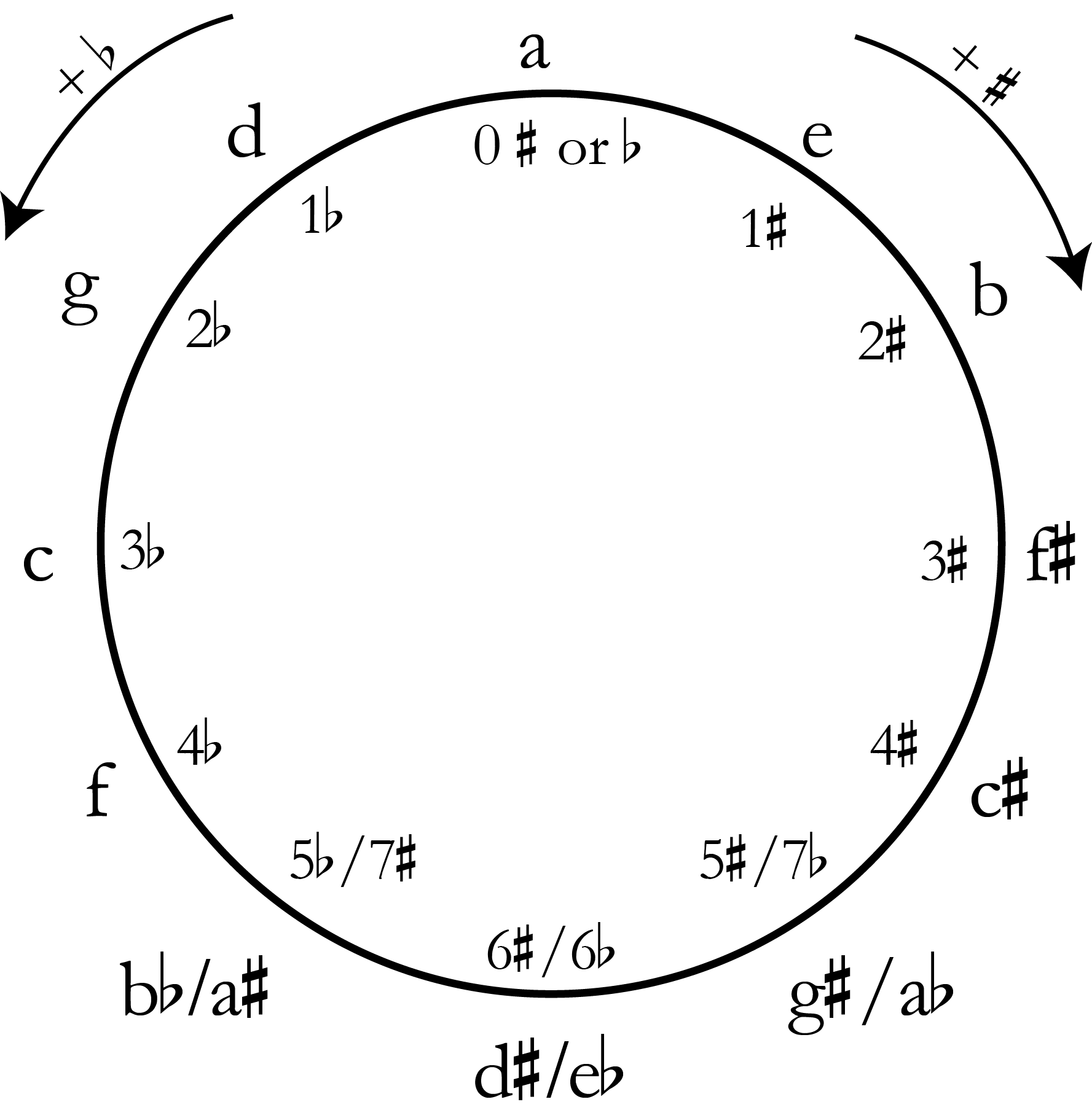Integrated Music Theory 2021-22
Discussion 2d - Key Signatures
Class Discussion
Frequency Ratio
-1:2 is the most basic ratio we can create with two frequencies. 1:2 creates an octave difference.
-When we have two waves (frequencies) that line up evey two waves (in the crest), our ear hears that repetition as a pitch but one is higher than the other.
-The next simplist ratio is 2:3. This creates a P5 sound.
P5 When we stack the first five P5 around the circle, we get a major pentatonic scale. When F# is changed is changed after B (instead of F), the cycle only repeats after seven pitches instead of all twelve.
What is a key signature?
- A set of sharps or flats defining the scale that you’re playing in?
- Close: the wording implies a key signature where sharps and flats occur together, which isn’t the standard key signature we’re trying to come up with a definition for
What is a key?
- A pattern that results in a tonal center?
- Yes, though the “tonal center” part is what we are especially concerned with!
**Order of Flats/Sharps
- Flats (B,E,A,D,G,C,F)-Battle Ends And Down Go Charles Father, BEAD Greatest Common Factor
- Sharps (F,C,G,D,A,E,B)- (Reverse of Flats) **Finding Minor Versions
-Relative Minor: Different tonic, same key signature (Find the 6th scale degree, that is the relative minor, or count 3 notes below the Tonic) -Parallel Minor: Same tonic, different key signature (Add three flats/take away three sharps) For diatonic purposes:
- Key is defined by a tonic
- Key signature acts as a shorthand in reference to the notes organized around the tonic (like a legend on a map)
Tricks (other than memorization) for figuring out what key signature you’re in
- Sharps: last sharp + up a half step = the key
- Flats: second to last flat = the name of the key
Further reading
======
From Open Music Theory
When you’re writing in a single key for an extended period of time, it gets tedious to write out the accidentals over and over again.
Here is a simple melody in D major, without a key signature.
To avoid this, composers used key signatures at the beginning of each staff to remind performers of which pitch classes should have flats or sharps.
Here is the same melody, with the key signature at the beginning of the staff to remind the performer that F and C should be sharp.
The circle of fifths
The circle of fifths is an illustration that has been used in music theory pedagogy for hundreds of years. It conveniently summarizes the key signature needed for any key with up to seven flats or sharps.
But which notes are flat or sharp in a key? To properly use the circle of fifths to figure out a key signature, you’ll need to also remember this mnemonic device, which tells you the order of flats and sharps:
Father Charles Goes Down And Ends Battle.
For sharp keys (clockwise on the circle of fifths), read the mnemonic device forward. For example, the circle of fifths tells us that there are 3 sharps in the key of A major. Which three notes are sharp? The first three notes in the mnemonic device: F(ather), C(harles), and G(oes).
For flat keys (counter-clockwise on the circle of fifths), read the mnemonic device backwards. For example, the circle of fifths tells us that the key of A-flat major has four flats. Which flats? Reading backwards: B(attle), E(nds), A(nd), D(own).
Minor key signatures
Of course, minor keys can use key signatures, too. In fact, for each major key signature, there is a corresponding minor key that shares its signature. Major and minor keys that share the same key signature are called relative keys. For example, both C major and A minor have zero sharps or flats. A minor is considered the relative minor of C major; likewise, C major is considered the relative major of A minor. Compare the minor key circle of fifths below with the major key circle of fifths above, and you’ll see the remaining relative key pairs.
Writing key signatures
Below is a reference that shows how all of the key signatures should be written on treble, alto, tenor, and bass clefs.











